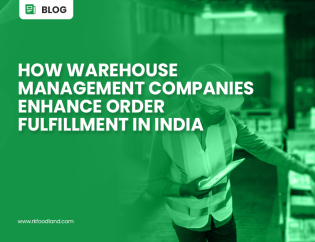
The role of packaging is important in supply chain operations as it impacts cube on trucks, inventory storage, product safety, regulatory compliance, and customer satisfaction.
Packaging errors can result in premature spoiling, cross contamination of products , consumer illness and sometimes even fatalities.
They are often the root cause of massive recalls, excess and obsolete inventory costs, and can often be prevented through a clear error-proofing process.
Companies face several packaging-related issues like:
- In-transit damage
- Inconsistent availability of containers
- Lack of visibility
- Not fully utilizing the capacity
- Product contamination from dirty receptables
- Inefficient returns management for reusable packaging
Innovative solutions in packaging delivers more efficiency in supply chain operations through:
Cost Reduction
A holistic view on packaging within the supply chain, can enable cost efficiency from improved logistics to transport efficiency and reduced product waste.
Compliance and Safety
Supply chain partners can keep companies aligned with the changes in packaging regulations and help follow national and international standards.
Having the right packaging solution will provide efficient, safe, and cost-effective movement through the entire supply chain. Finding innovative solutions to packaging is essential for finding fixes to the supply chain problems. There are several approaches to developing such solutions. One is to ensure more collaboration between supply chain and packaging experts to develop optimal packaging formats for specific products.
Standardization-
The performance of packaging in logistics operations are highly affected by the level of standardization of packaging, material handling equipment, vehicles and information and communication technology.
Standardization aims to eliminate waste, duplication of work and redundant activities. In general, a high level of packaging and logistics standardization often leads to lower logistics cost. However, the risk of lock-in effects should be considered in the decision to standardize
Optimizing packaging-
To optimize packaging, one can make design changes such as shaving off a few millimetres from a package or using lighter yet durable materials. Lightweight models for easy transit or strong and durable varieties for repeated use are just a couple of examples. The key element here is to reduce weight, achieve more storage area and use floor space as well as height effectively. For instance, heavy-duty plastic units can be stacked six high, whereas traditional units such as cardboard boxes can only be stacked two or perhaps three high without increasing the likelihood of costly damage.
Ensuring Pallet hygiene-
Storage conditions can be an entry point for pathogens and permit the growth of pathogenic and spoilage microorganisms. Proper post process storage of products is crucial, especially in case of food products. Conventional packaging materials such as wood and cardboard can be problematical. Wooden pallets that are not treated properly may be prone to insect infestation and often must be scrapped.
Storing wooden pallets in wet or humid conditions and poor ventilation in warehouses can both contribute to fungal growth. A hygienic pallet box made from pure virgin plastic rather than cardboard or wood which would eliminate the drawbacks of wooden pallets is a prime example of a new product that might improving hygiene standards in the supply chain.
Sustainability-
In recent years biodegradable non-plastic packaging and films have begun to immerge as an alternative to standard packaging. Biodegradable packaging is produced using biopolymers which can be safely consumed and degraded quickly. The materials are layered together using heat and pressure to form an armor which protects the contents from light, oxygen, air, dirt, and moisture. Many companies especially in the food industry are quickly adopting use of cartons which are lightweight, easy to transport and completely eco-friendly.
As a critical component of freight operations, packaging is an important factor in supply chain efficiency. Logistics demands for packages that can be easily handled throughout all processes. It should fulfill requirements from various organizational units and areas. Packaging should also have a minimal environmental impact and fulfill ergonomic and legal requirements. The challenge now is to promote the wider adoption of innovative concepts in packaging that ensures safety and quality along with cost efficiency and sustainability.









